mr peabody
Bluelight Crew

Dr. Richard Louis Miller, MA, PhD: You started out as a psychiatrist doing Freudian work. You were initially deeply interested in psychoanalysis, but then something happened that brought you into the field of research with LSD.
Stanislav Grof, MD, PhD (SG): I was born in Prague, Czechoslovakia, and originally wanted to go into animated movies. Just before I made the final commitment, I read Freuds Introductory Lectures on Psychoanalysis and I got very excited. That week I decided not to work in animated movies but to study medicine and to become a psychiatrist. As I was getting deeper into psychoanalysis I became disappointed, not with the theory but with the practice of psychoanalysis: how long it takes, how much money it costs, and how much energy it consumes. And the results were not exactly breathtaking. I started nostalgically returning in my mind to animated movies, feeling that it would have been a better career.
Then the psychiatric department I was working in received a large supply of LSD-25 from the pharmaceutical company Sandoz in Basel, Switzerland. It came with a letter describing the serendipitous discovery of its psychedelic effect by Albert Hofmann, a chemist who intoxicated himself accidentally when he was synthesizing it. It was supposed to be one of the substances used in gynecology and for relief of migraine headaches, which were the main indications of the ergot alkaloids, though Hofmanns discovery was a very unexpected fringe benefit from this research. It was not considered a particularly interesting substance, so the research was discontinued. Those of us who knew Albert Hofmann frequently heard the story that he somehow could not get this substance off his mind for irrational reasons. He felt the pharmacologists must have overlooked something. So in 1943 he decided to synthesize another sample and this is when the intoxication occasion happened.
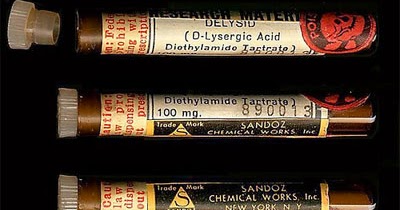
An unconventional experimental tool
RLM: So Sandoz sent LSD around the world, and you were one of the people to whom it was sent. You received the package, and what happened?
SG: The letter accompanying the package suggested on the basis of the pilot studies conducted in Zurich that LSD could be used for inducing experimental psychosis. We would have a model that we could study. There was another suggestion that this could be a kind of unconventional educational tool that psychiatrists, psychologists, nurses, and students would have the chance to spend a few hours in a world that seemed to be like the world of some of their patients. This would help them to understand their patients better, to be able to communicate with them more effectively and hopefully be more successful in treating them. That was something that was sorely needed at the time; psychiatric therapy was truly medieval; electroshock, insulin comas, cardiazol shocks, dunking in cold water, straitjackets, and so forth.
RLM: So the therapists would have an experiential understanding of the psychoses of their patients by going into that realm for a limited number of hours?
SG: Yes, that was the idea. At that point I was quite disappointed with psychoanalysis, and this seemed like a new possibility. I became an early volunteer in Prague, and I had an experience that within a day transformed me professionally and personally.
Transformation from Materialist to Mystic
RLM: I heard you talk about that transformation at the Bently Reserve presentation. How can you start out as Stan Grof, take a substance, and at the end of the experience be a different Stan Grof?
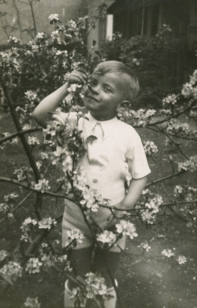
SG: I was brought up in a family where there was no religious affiliation. My parents did not commit me or my brother to any religion. I had a very materialistic worldview and went from this family upbringing straight to medical school, which certainly does not cultivate mystical awareness. Czechoslovakia was at that time controlled by the Soviet Union, and we had a very strong materialistic education. Yet within those few hours in this experience I basically became somebody with a spiritual, mystical worldview and a completely transformed perspective on life. Also, my interest shifted from psychoanalysis to non-ordinary states of consciousness. Research into these states has now been for over half a century my profession, my vocation, and I would say passion. I have done very little in this half century that has not been related to these special states of consciousness.
RLM: Talk to us more about this transition. What does it mean to be a materialist, and what does it mean to you to be more spiritual or mystical?
SG: I was trained to believe that this was a material universe, which in a sense created itself without any guiding intelligence. There was no place for spirituality. If we believe that this is a universe of matter and that life, intelligence, and consciousness are latecomers after billions of years of the development of matter, then they are just side products or ?€œepiphenomena?€ of material processes. This worldview rejected spirit; to be spiritual meant to be ignorant and superstitious, not having studied what material science discovered and says about the universe.
This was a completely different perspective than one saying the universe is permeated by superior intelligence and that consciousness is a fundamental aspect of the universe?€”not the side product of the human brain. It was a very radical transformation.
RLM: Are you putting forth that there is a consciousness floating through the universe? Perhaps some strip of consciousness that is always around us? How do you conceptualize this spiritual consciousness?
SG: Consciousness for us is like water for fish. It is a fundamental aspect of our existence. If I had to name an existing conceptual framework for what I have experienced, I would go to the great spiritual philosophies of the East: Hinduism, Buddhism, and Taoism. These cultures were involved in systematic exploration of consciousness, with the same kind of focus and enthusiasm that we have for the material world. They were not particularly interested in developing technologies and industry. Their focus was on exploration of consciousness. Their understanding of the human psyche and consciousness was way beyond what we have now in the materialistic science in the West.

A new worldview
RLM: Im beginning to understand what you mean by being transformed in a day. Starting out with a materialistic framework has political implications for how we live our lives in terms of the importance of acquiring material things and living in a culture that values material things as the goal. It is light years away from a conceptual framework in which spirituality and consciousness are paramount. Therefore, the value system that would come out of a spiritual worldview would be much more aligned with feelings and people in terms of their nature and in terms of connecting with nature rather than connecting with things. Is that correct?
SG: Yes. We have now the most advanced worldview in Western science, the new or emerging paradigm, and we see that it is rapidly converging with this spiritual worldview of ancient systems, particularly the great spiritual philosophies and religions of the Far East. There are repeated reports now from quantum relativistic physics that come to the same conclusion?€”that consciousness is somehow fundamentally involved in the creation of the experience of the material world itself.
RLM: Yes.
SG: The new science is converging with mysticism. What we were experiencing and finding in our psychedelic research was fundamentally incompatible with the Cartesian-Newtonian worldview, basically the seventeenth-century philosophy?€”but perfectly reconcilable with the emerging paradigm.
Observations from 4,000 LSD sessions
RLM: Some time after you had this transformation, you moved to the United States.
SG: Yes. I had my first psychedelic session in 1956, and I moved to the United States in 1967. I had worked in psychedelic research in Prague for eleven years before leaving the country.
RLM: Were you able to do LSD research during those eleven years?
SG: Yes. We were doing something that we called psycholytic therapy, a large number of medium dosages of LSD, something that one of my patients called onion peeling of the unconscious. We were able to remove layer after layer and map the unconscious, moving from the Freudian individual, or personal unconscious, through what I call the perinatal unconscious, related to the memory of birth, to what Jung called the collective unconscious, both its historical and mythological, or archetypal, aspects.
RLM: During that period, Stan, from 1956 to 1967, eleven years, approximately how many people were treated with this dosage of LSD?
SG: If I add up the sessions in Prague and later in the United States, I have been personally involved in about four thousand psychedelic sessions.
RLM: What is a medium dose?
SG: Maybe about 150 to 200 micrograms. Once we go to 250 and up to 500 micrograms, we would call them high-dose sessions.
Neither Panacea nor Devil?€™s Drug
RLM: The American public is traumatized by the very mention of LSD as a result of the terrible publicity that came out of the 1960s. But here we have someone who has done actual scientific research, 4000 cases, to tell us whether this is a dangerous medicine. Are the side effects such that your patients were jumping out of windows? Did they have to be institutionalized?
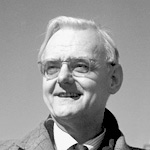
SG: Well, it is a very powerful tool. The perspectives ranged from calling it a panacea to the devils drug. What is overlooked is that this is a tool. Humphry Osmond [the English psychiatrist and researcher who coined the term psychedelic] compared it to a knife. Is a knife a terribly dangerous tool or is it a useful instrument? Imagine a discussion where the chief of the New York Police Department would describe the murders committed in the back streets of New York City, and the Surgeon General would say, Well, if you have the right kind of education you can do amazing medical interventions with the knife. And we would have in the same discussion a housewife talk, who would think about a knife primarily as a tool to cut salami and vegetables, and an artist whose emphasis would be using it for carving wood. It would be absolutely clear that we are not talking about the knife, we are talking about the various human uses of the knife for different purposes and different intentions.
Psychedelics were used for many different reasons, from therapy of difficult psychiatric patients and alleviation of fear of death and physical pain in terminal cancer patients, through facilitation of mystical experiences or artistic inspiration, to means of compromising of foreign diplomats and chemical warfare. What would happen if you put it into peoples water supply? If you would use it in aerosols in the field? If you would smuggle it somehow into the drinks of diplomats and politicians and military leaders and so on? Those are all human uses with very different motivations. Psychedelics are powerful openers of the mind, so they can be used for all those different purposes. So it is a question of set and setting?€”who is giving psychedelics to whom, in what physical environment, with what kind of intention, and for what kind of purpose.
In industrial civilization we have so far abused everything. We have abused biology for biological warfare, chemistry for chemical warfare, atomic energy for nuclear warfare, laser and rockets for destructive purposes, and so on. Why would psychedelics be different? We are incredibly developed in terms of the neocortex and intellectual capacity, but we stayed stuck in the Stone Age with our emotion. As a result, we are using nuclear weapons and other means of mass destruction with the same kind of mentality with which the Neanderthals were using stones and sticks.
Understanding our ecological interconnectedness
RLM: Well, there is a reason that LSD has such a psychological effect on the public: the fact that the medicine itself can change consciousness; for example, your experience of starting out as one Stan Grof, with a materialistic framework for how the world works, and then achieving a new Stan Grof, with a different worldview: expanded from materialism to spiritualism plus mysticism. That is a radical transformation. This medicine could be seen, and I think it is seen by many, as revolutionary, because it has the potential to change consciousness on a grand scale; is that not accurate?
SG: It has tremendous potential for individual therapy, but it is also associated with a radical transformation of worldview and bringing in the spiritual perspective. If it could be applied on a large enough scale, it could significantly increase our chances for survival on the planet. If we continue our ignorant strategy, bringing a linear focus into a biological system that is basically circular, we do not have great chances for survival. Plundering of nonrenewable resources and turning them into pollution is the last thing we need as biological entities. We need clean water, clean air, and clean soil in which we grow our food. Nothing is more important, no economic, political, ideological, military, or religious concerns. Nothing should be more important than protecting life and creating optimal conditions for survival on the planet. We are violating this and are polluting the very environment that we depend on.
This can change through these transformative experiences, where people can work through the traumas that they experienced in childhood, in infancy, during birth and prenatal existence. We need to be open to the mystical, spiritual perspective?€”recognizing our fundamental connection with other people and the way we are embedded in nature. We cannot do anything to harm nature that will not ricochet and hurt us.
Caution required
RLM: We have millions of people in the United States, and I do not know how many around the world, who are experimenting on their own with LSD. We do not have alarming reports from emergency rooms around the United States about mass occurrences of psychotic breakdowns. We do not have reports from police departments around the United States of incidents being created by LSD. These people are taking it on their own as you well know, as we all well know. Some of them have guides, some of them do not have guides. They are taking this substance that has huge potential for transformation. Why are we not hearing more, over these decades, about emergency room incidents, and police, and people killing people?
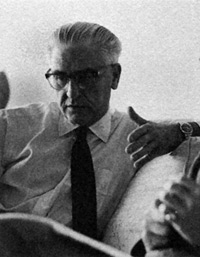
SG: There was a big study conducted by Sidney Cohen, one of the early pioneers.
RLM: I remember him, yes.
SG: A psychoanalyst in Los Angeles. He wrote a review of the side effects and complications of LSD and mescaline sessions, drawn from twenty-five thousand administrations. The side effects and negative aftereffects were minimal as long as it was done responsibly. In the early years, we did not know very much about the effects of these psychedelics, but it was understood that if somebody had this powerful experience, there had to be somebody around in the usual state of consciousness to ?€œhold the kite string. You had to keep people overnight and talk with them in the morning before you sent them home. Under those circumstances the incidence of complications was minimal. It was ridiculous compared with what we had with electroshocks or insulin comas, where 1 percent mortality was considered an acceptable therapeutic risk.
All these were procedures with incredible risk compared to the responsible use of psychedelics. People were using psychedelics in places like Woodstock, where they were handing out all kinds of substances of unknown origin, quality, and dosages, handing it out with both hands. It's a miracle that there were not more complications under such circumstances, if we compare it with what can happen with alcohol.
Psychedelics are certainly powerful tools. It makes me very uncomfortable when I see that young people play with them in open public places where nobody is holding the space, knowing that they are doing something illegal and that police might show up any minute. This kind of use significantly increases the risks and diminishes potential benefits and gains. I hope that the recent renaissance of interest in psychedelic research will generate new unbiased information and eventually lead not only to mainstream therapeutic use but also eventually to the creation of a network of facilities where people who want to experiment with psychedelics will have the chance to do it with known doses of pharmaceutically pure substances and under expert guidance. This will take us far in the direction that Albert Hofmann wanted to see for LSD, a New Atlantis in which psychedelics potential for healing, enhancement of creativity, and spiritual opening will be integrated into future society and contribute to international peaceful coexistence.
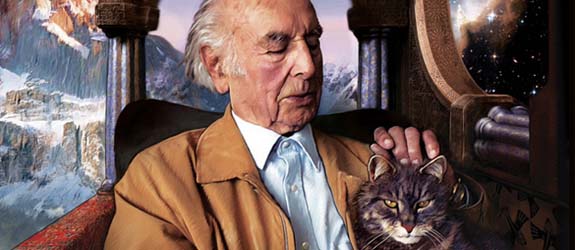
http://realitysandwich.com/322419/observations-from-4000-lsd-sessions-dialogue-with-stanislav-grof/
Last edited:



